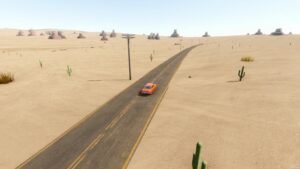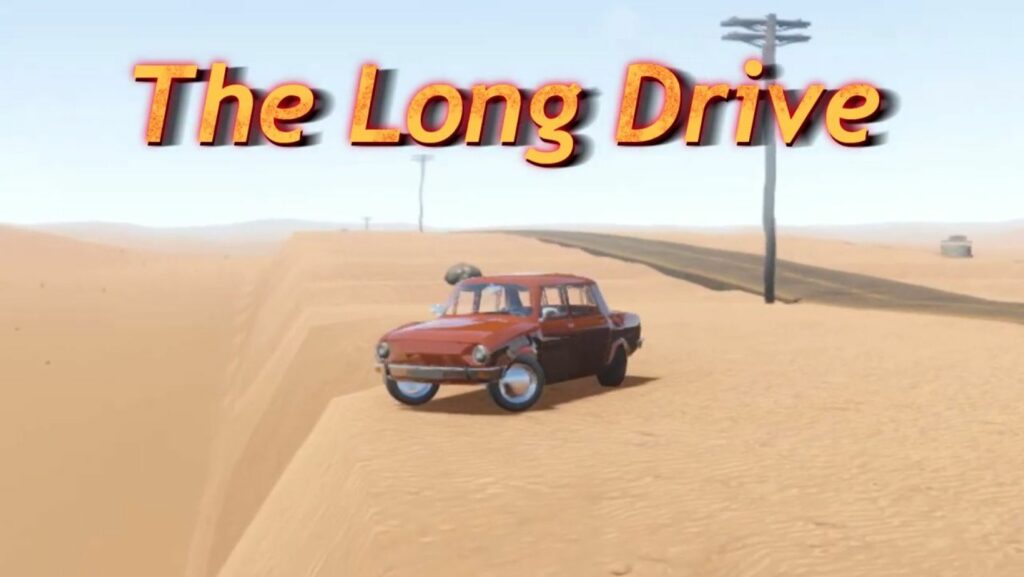Immerse yourself in the vast, desolate beauty of the desert with “The Long Drive Multiplayer”. This survival game offers more than just a thrilling ride; it’s a test of endurance, strategy, and how far you’re willing to go to survive.
For those unfamiliar, “The Long Drive” is a seemingly simple game that quickly reveals its depth. The multiplayer aspect adds a new dimension, transforming the solitary journey into an exciting adventure with friends.
The Long Drive Multiplayer
Derived from its single-player origins, The Long Drive now embarks on a new journey through its multiplayer mode. This fresh phase propels a solo desert voyage into a collective adventure, teeming with unexpected elements and boundless potential.
Features of Multiplayer Mode

The Long Drive Multiplayer Mode possesses distinct characteristics that distinguish it from other survival games. On top of the primary objective of enduring a desolate desert environment, the multiplayer mode allows players to interact with one another in real-time. This facilitates collaborative game-play strategies and heightens the unpredictability factor.
Among the primary features, players get the opportunity to share a drive, venture into unknown territories, and even respond to the game’s dynamic events together. For instance, they can jointly address challenges like car breakdowns or sudden encounters with wildlife. Additionally, players can share inventory items like fuel, water, and even vehicle parts. This subtly fosters a sense of community within the harsh gaming environment.
How It Differs From Single Player

Multiplayer mode stands in sharp contrast to the single-player mode in The Long Drive. In single-player mode, players solely rely on their strategies to survive the desert journey. It indeed begets a sense of solitude and spirituality, grounded in a personal survival instinct.
Conversely, multiplayer mode incites a more social survival dynamic. It draws the curtains on a virtual stage where players, rather than solely overcoming their personal plight, also aid other players in their survival pursuits. A case in point is teamwork in addressing sudden calamities, such as repairing a shared vehicle’s punctured tire or managing food resources.
Gameplay Experience in Multiplayer
Exploring the Endless Desert Together

While journeying through The Long Drive’s vast desert multiplayer setting, players discover an enhanced layer of engagement. The endless stretches of sandy lands, initially designed for a solitary voyage, morph into a social sphere ripe for mutual exploration. Suddenly, each sand dune crossed, each dilapidated building stumbled upon, registers collectively as shared experiences. It’s these subtle yet meaningful moments of collective adventure that multiply interactive possibilities, fostering the critical aspect of joint discovery. For instance, encounters with desert wildlife, the sudden break down of vehicles, or the dwindling water and fuel resources all cast a new light when tackled as a team rather than a lone player.
Interaction and Mechanics

Besides the joint exploration, player interaction fundamentally changes too, bartering significance in the multiplayer mode of The Long Drive. Each player’s ability to verbally communicate, share resources, or collectively strategize adds another dimension to the standard mechanics of survival. For example, gamers, when stranded due to a vehicle breakdown, might need to risk a long walk under the scorching desert sun to find spare parts in scattered buildings. In single-player mode, it’s solely on the player. But in multiplayer mode, one can stay behind guarding the vehicle and the resources, while the other fetches the necessities. Interaction also extends to resource sharing and management. Items such as fuel, water, food, and items such as car parts become communal goods rather than personal possessions. In this way, the mechanics of single-player survival transform, framing the multiplayer gameplay experience around the ethos of shared survival.
Game’s Complexity and Depth
“The Long Drive Multiplayer” is more than just a game; it’s a journey, a shared experience that bonds players in a unique way. With its real-time interactions and resource sharing, it’s a testament to how far multiplayer gaming has come. Yet, it’s not without its challenges. Latency, desynchronisation, and voice lag issues are part of the package, but they’re not deal-breakers. They’re hurdles that players learn to navigate, adding another layer of strategy to the game.

